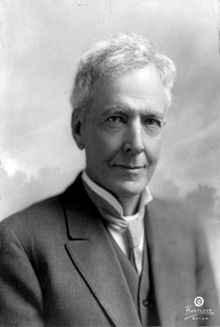
Back لوثر بيربانك Arabic لوثر بيربانك ARZ لوتر بوربانک AZB Лутър Бърбанк Bulgarian লুথার বারব্যাঙ্ক Bengali/Bangla Luther Burbank Catalan Luther Burbank Czech Luther Burbank German Luther Burbank Spanish لوتر بوربانک Persian
Luther Burbank | |
|---|---|
 | |
| Born | March 7, 1849 Lancaster, Massachusetts, US |
| Died | April 11, 1926 (aged 77) Santa Rosa, California, US |
| Spouses | Helen Coleman, Elizabeth Waters |
| Children | None |
| Scientific career | |
| Fields | Botany |
| Patrons | Andrew Carnegie |
| Author abbrev. (botany) | Burbank |
| Signature | |
 | |

Luther Burbank (March 7, 1849 – April 11, 1926)[1] was an American botanist, horticulturist, and pioneer in agricultural science. He developed more than 800 strains and varieties of plants over his 55-year career. Burbank's developments included those of fruits, flowers, grains, grasses, and vegetables. He developed (but did not create) a spineless cactus (useful for cattle-feed) and the plumcot.
Burbank's most successful strains and varieties included the Shasta daisy, the fire poppy (note possible confusion with the California wildflower, Papaver californicum, which is also called a fire poppy), the "July Elberta" peach, the "Santa Rosa" plum, the "Flaming Gold" nectarine, the "Wickson" plum (named after the agronomist Edward J. Wickson), the freestone peach, and the white blackberry. A natural genetic variant of the Burbank potato with russet-colored skin later became known as the russet Burbank potato. This large, brown-skinned, white-fleshed potato has become the world's predominant potato in food processing. The Russet Burbank potato was in fact invented to help with the devastating situation in Ireland following the Great Famine. This particular potato variety was created by Burbank to help "revive the country's leading crop" as it is slightly late blight-resistant. Late blight is a disease that spread and destroyed potatoes all across Europe, but caused extreme chaos in Ireland due to the high dependency on potatoes as a crop by the Irish.[2]
- ^ Luther Burbank. Peach and Other Fruit. US Patent No. PP15. Inducted in 1986, National Inventors Hall of Fame
- ^ Smith, Jane S. (2010). The Garden of Invention : Luther Burbank and the business of breeding plants. New York: Penguin Group. pp. 1–2. ISBN 978-0143116899.